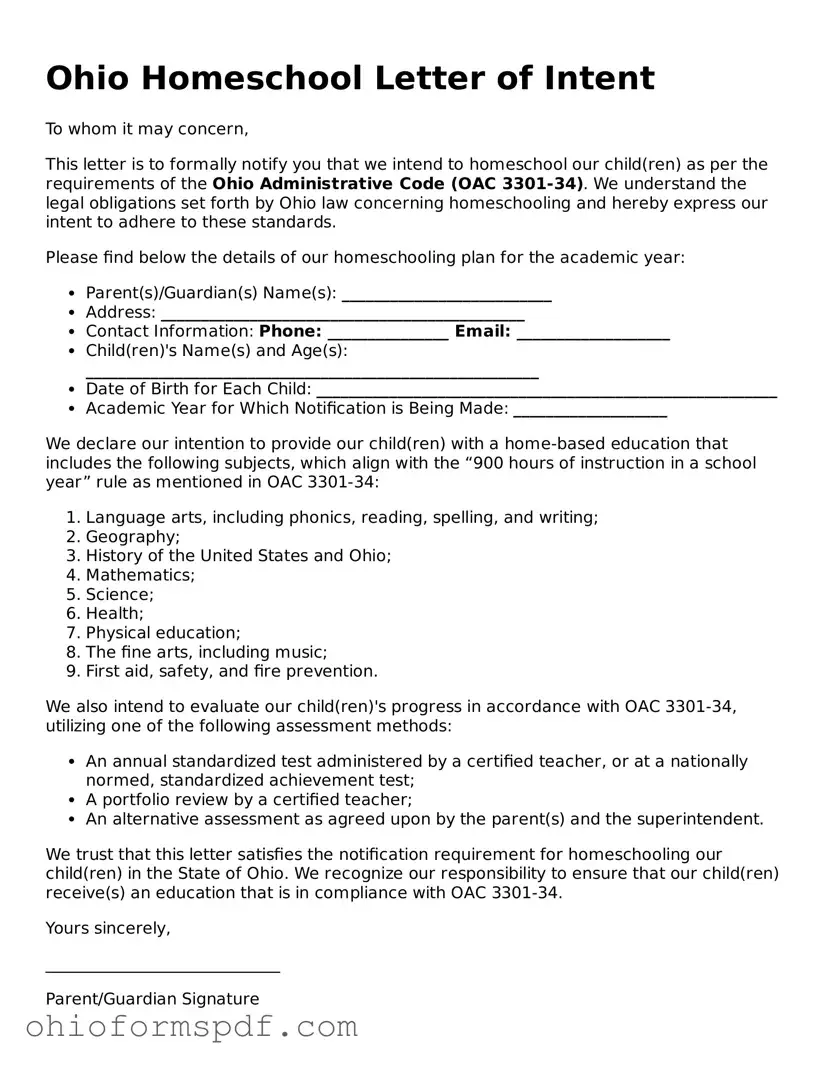What is the Ohio Homeschool Letter of Intent form?
The Ohio Homeschool Letter of Intent form is a document that parents or guardians must submit to their local school district to notify them of their intention to homeschool their child. This form is a crucial first step in the legal process of homeschooling in Ohio, ensuring that the child's education complies with state educational laws and requirements.
Who needs to fill out the Homeschool Letter of Intent form in Ohio?
Any parent or guardian planning to homeschool their child or children in Ohio needs to complete and submit this form. It’s required for children between six and eighteen years of age, the compulsory school attendance age in the state.
Where can I find the Homeschool Letter of Intent form to fill out?
The form is typically available through your local school district's office or website. Additionally, the Ohio Department of Education’s website may provide a downloadable version or links to resources where you can access the form.
What information is required on the Homeschool Letter of Intent form?
The form requires detailed information about the child or children being homeschooled, including full names, ages, and address. It also asks for a brief outline of the intended curriculum for the coming school year, information about the instructor(s), and assurance that the homeschool will meet the minimum hourly instructional requirements set by Ohio law.
Is there a deadline for submitting the Homeschool Letter of Intent form in Ohio?
Yes, while the state of Ohio does not mandate a specific deadline, it's recommended to submit the letter of intent at least one week before beginning to homeschool. This provides the local school district enough time to process the notification. However, it's best to contact your specific school district for any local deadlines or requirements.
What happens after I submit the form to my local school district?
After submission, the local school district reviews the letter of intent and the provided educational plan. If everything meets the state's educational requirements, they will acknowledge receipt and your child is officially recognized as being homeschooled. You may also receive further communication or requirements to follow up on, depending on your school district’s policies.
Can I withdraw my Homeschool Letter of Intent?
Yes, if circumstances change and you decide not to homeschool your child, or if you move out of the district, you can withdraw your Homeschool Letter of Intent. It’s important to notify the school district in writing and, if applicable, comply with the enrollment procedures for public or private school admission for your child.
